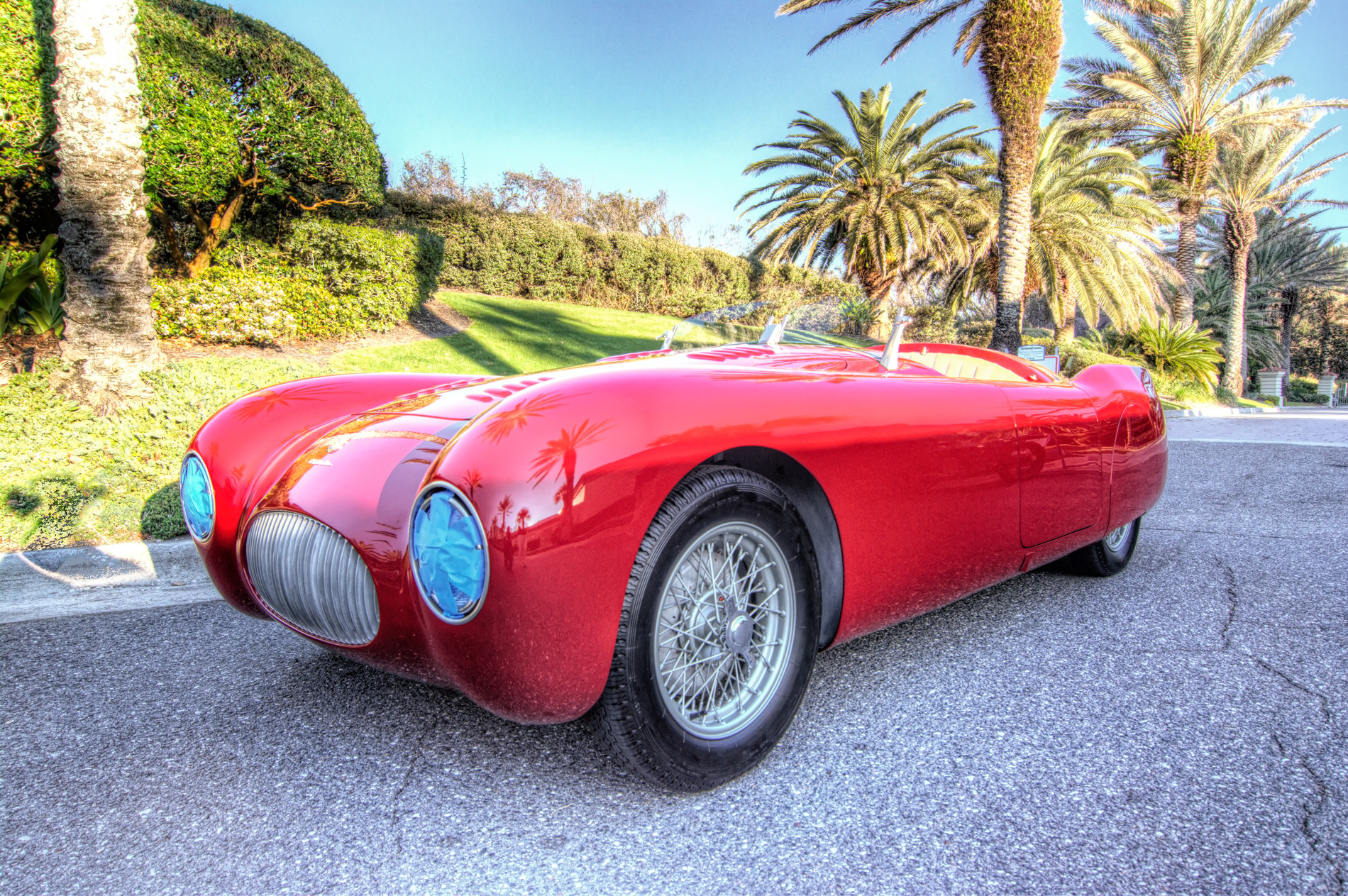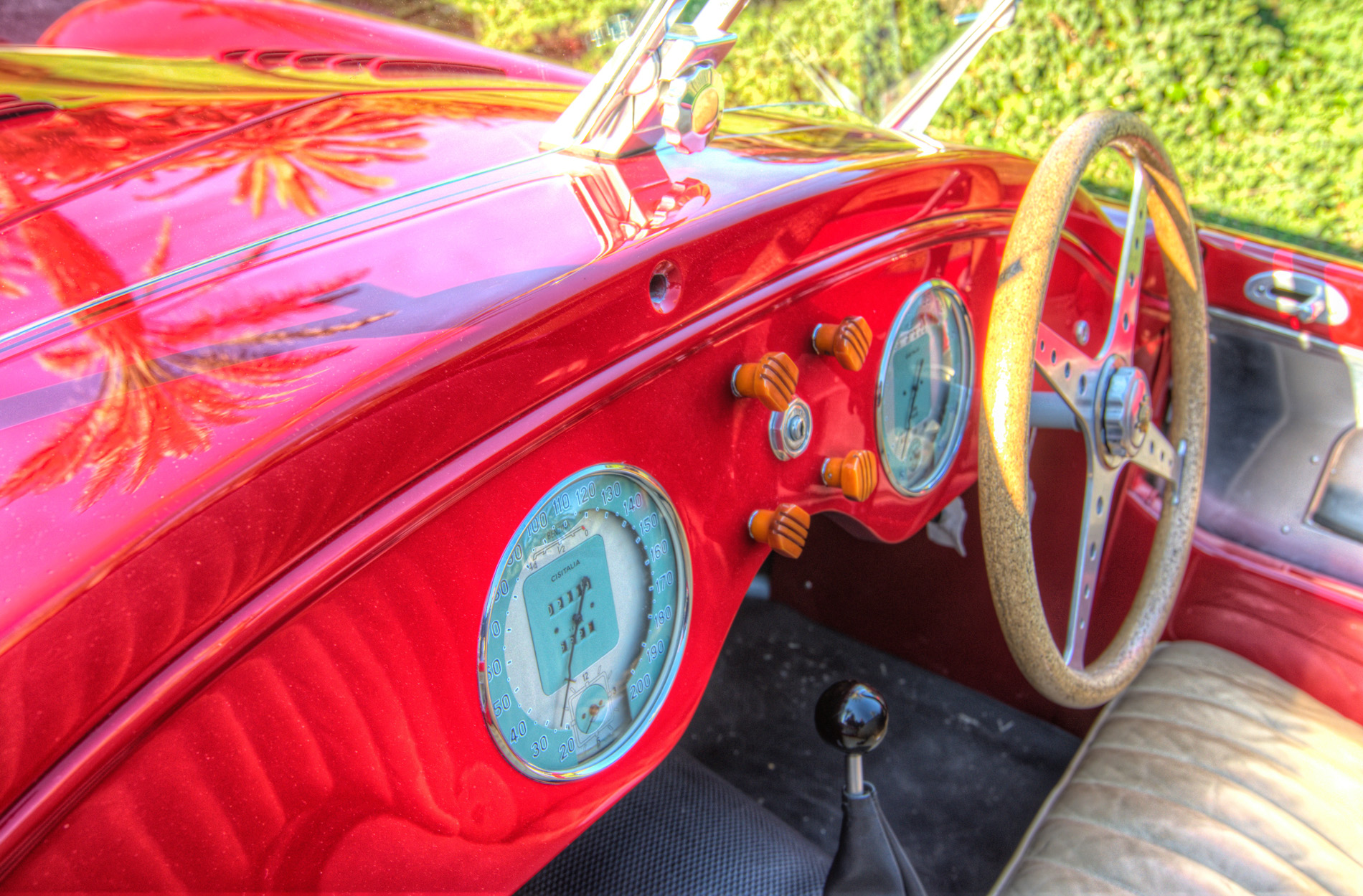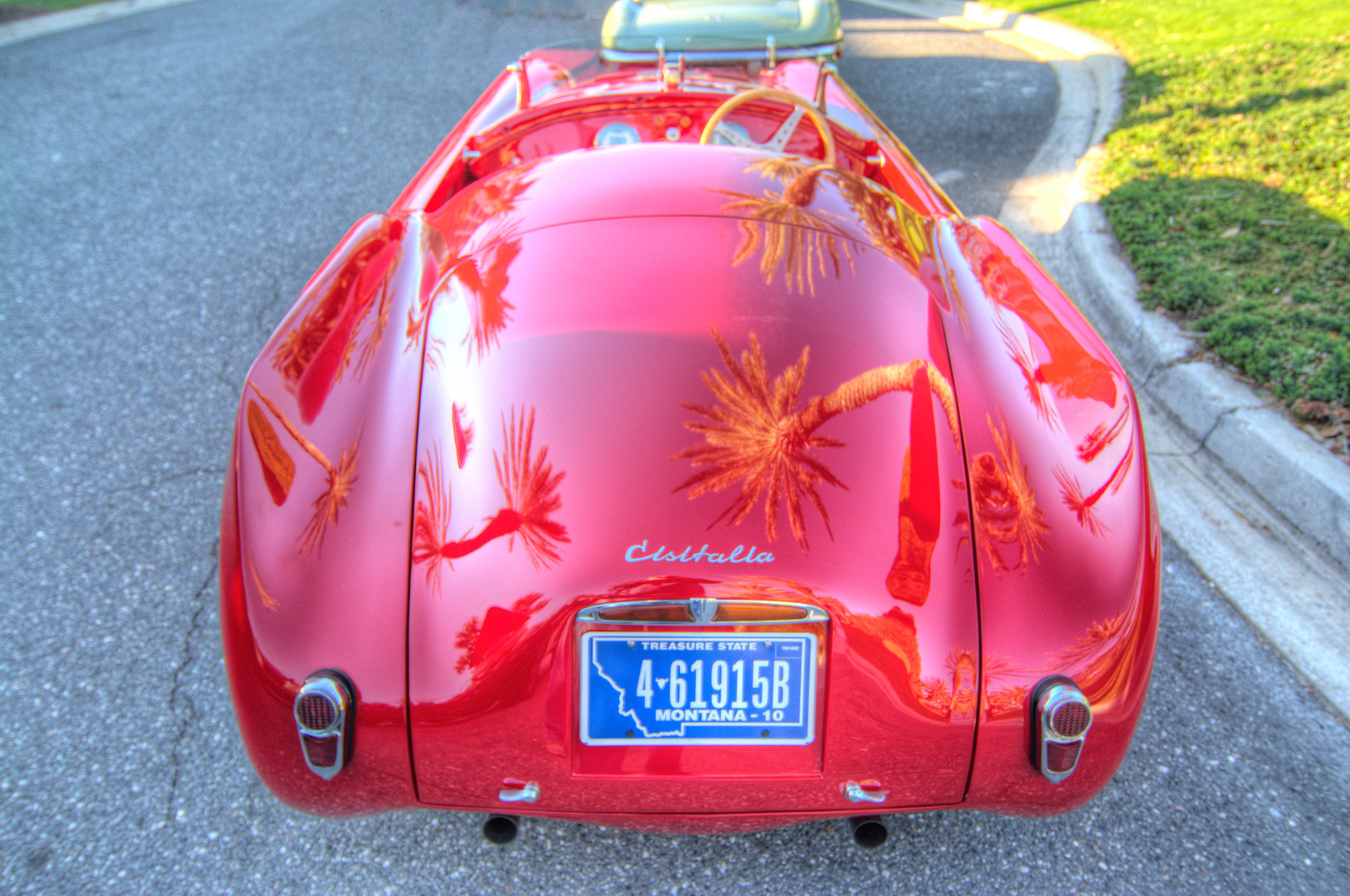
Since only 26 1948 Cisitalia 202 Spyder Mille Miglia Nuvolari automobiles were manufactured by Cisitalia in Torino, Italy, all of the models were handmade by a small talented group including Carlos Abarth, Dante Giacosa and Giavonni Savonuzzi. Several variants were made and one of the more important ones, the SMM Nuvolari Spyder, was built and named after a class victory at the 1947 Mille Miglia with Tazio Nuvolari at the wheel. It is easily identified by its large rear fins and twin windscreens. The car is powered by an 1100 cc 4-cylinder engine developing 75 horsepower.
A multi-year restoration was completed in 2012. It has retained its original bodywork, engine and chassis.
Design and Features
- Designer: The body was designed by Pinin Farina (now known as Pininfarina), one of the most prestigious automotive design firms.
- Body Style: 2-door roadster (Spyder)
- Chassis: Tubular frame chassis with lightweight aluminum body panels, emphasizing aerodynamic efficiency.
- Interior: Simple and functional, focused on the essentials needed for high-speed driving and racing.
Performance
- Engine: 1.1-liter (1100 cc) inline-4 engine, based on a Fiat unit but highly modified by Cisitalia.
- Power Output: Approximately 55-60 horsepower.
- Transmission: 4-speed manual gearbox.
- Top Speed: Around 100 mph (160 km/h), impressive for its class at the time.
- Suspension: Independent front suspension with transverse leaf spring and a live rear axle with coil springs.
- Brakes: Drum brakes all around, typical for the era.
Production and Legacy
- Production Years: The Cisitalia 202 series was produced from 1947 to 1952.
- Total Units Produced: Around 170 units of the 202 series in various body styles, but only a handful of the Spyder Mille Miglia versions.
- Price: These cars were expensive and exclusive, aimed at affluent enthusiasts and racers.
Significance
- Innovative Design: The Cisitalia 202 is often credited with being one of the first cars to feature a truly integrated design, where the body and fenders form a continuous shape, setting new standards for automotive aesthetics.
- Racing Heritage: The "Mille Miglia" name signifies its connection to the famous Italian endurance race. The car gained fame when driven by the legendary Tazio Nuvolari in the 1947 Mille Miglia, where he performed admirably despite facing mechanical issues.
- Cultural Impact: The car's design was so revolutionary that it was included in the Museum of Modern Art's (MoMA) collection in New York City, highlighting its status as a work of art.
Challenges
- Maintenance: Given its age and rarity, maintaining and restoring a Cisitalia 202 can be challenging, with parts being difficult to source.
- Performance Limitations: While advanced for its time, the car's performance by modern standards is modest, emphasizing the need to appreciate it within its historical context.
Notable Features
- Aerodynamic Shape: The car's streamlined, aerodynamic body was ahead of its time and influenced future sports car design.
- Lightweight Construction: The use of aluminum and a tubular frame helped keep the car's weight low, enhancing its performance and handling.
- Racing Pedigree: The car's connection to Tazio Nuvolari and the Mille Miglia race adds to its mystique and desirability among collectors.
You may purchase a print of the 1948 Cisitalia 202 Spyder Mille Miglia Nuvolari in our dElegance 2018 online gallery.
The Vintage Automobile Article Index




